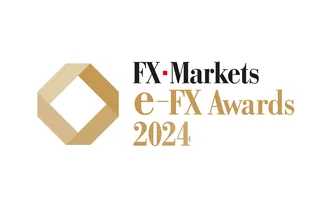
2016 was the year of the new normal, in every sense
The rise of non-bank market-makers, regulatory costs and risk management were the main themes in a busy year

CLICK TO VIEW 2016 BEST BANKS AWARDS TABLES
There are three standout themes for the year 2016: the rise of the non-bank market-maker, regulatory costs and ways of mitigating them, and risk management. In a way, the past 11 or so months have been remarkable in that normal business has resumed after years of regulatory woes.
Except normal today means something very different than it did two years ago, or even last year. In the 2016 normal, markets can have big gapping moves and that's ok. Tail scenarios with assigned probabilities equalling the near-impossible materialise and surprise markets? Of course. Brexit? Bring it. President Trump? Absolutely. Sterling flash crash? Why not.
Against such a background, it's little surprise that risk management has played a huge part throughout last year and into 2016, and while the Swiss National Bank's shock move in January 2015 was certainly a trigger for this exercise, subsequent events accelerated the process.
Risk management only goes so far when the underlying cause of the moves is a reduction in the number of risk-warehousing entities in the space
But risk management only goes so far when the underlying cause of the moves is a reduction in the number of risk-warehousing entities in the space. The well-documented decline in risk capital applied to market-making by banks due to regulation still stands true, but since last year, a handful of alternative market-makers have stepped up and morphed their business models into risk-taking entities.
Within banks there is a universal acknowledgement that non-banks are here to stay, and while most dealers welcome competition, some scepticism remains over the extent that these players will fill the void left by banks' retrenchment.
There are also growing calls for a levelling of the regulatory playing field; something that will develop further in the years to come, as the prominence of NBLPs has surely caught the attention of rule-makers as well as market participants.
Regulatory costs, meanwhile, are starting to trickle down from the sell side to customers – an alarming sign for an industry that operates on shoestring margins. One head of business says that if all of these costs were passed on to clients, volumes and liquidity would be severely affected.
Whether that will happen remains to be seen. And, in the meantime, the hunt for the Holy Grail has begun in earnest as efforts to develop over-the-counter FX clearing intensify.
Congratulations to all our deserving winners. I look forward to a busy 2017!
Interviews with the winners
Citi
JP Morgan
HSBC
UBS
Deutsche Bank
Only users who have a paid subscription or are part of a corporate subscription are able to print or copy content.
To access these options, along with all other subscription benefits, please contact customer services - www.fx-markets.com/static/contact-us, or view our subscription options here: https://subscriptions.fx-markets.com/subscribe
You are currently unable to print this content. Please contact customer services - www.fx-markets.com/static/contact-us to find out more.
You are currently unable to copy this content. Please contact info@fx-markets.com to find out more.
Copyright Infopro Digital Limited. All rights reserved.
As outlined in our terms and conditions, https://www.infopro-digital.com/terms-and-conditions/subscriptions/ (point 2.4), printing is limited to a single copy.
If you would like to purchase additional rights please email info@fx-markets.com
Copyright Infopro Digital Limited. All rights reserved.
You may share this content using our article tools. As outlined in our terms and conditions, https://www.infopro-digital.com/terms-and-conditions/subscriptions/ (clause 2.4), an Authorised User may only make one copy of the materials for their own personal use. You must also comply with the restrictions in clause 2.5.
If you would like to purchase additional rights please email info@fx-markets.com
More on Awards
Best prime-of-prime broker: Saxo
With its well-rounded offering and solid balance sheet, Saxo stood out as a trusted liquidity partner, regardless of market conditions
OSTTRA tackles FX risk with new settlement orchestration and expanded optimisation tools
OSTTRA has added settlement orchestration to its suite of FX services to help clients optimise their derivatives portfolios and tackle critical challenges in the market
Best trading technology for FX: smartTrade Technologies
As sell-side market participants more readily accept the integration of machine learning and AI into their processes, smartTrade Technologies unveils advanced services and modules that provide clients with powerful tools to maximise trading efficiency
Best liquidity aggregation service: smartTrade Technologies
With more sophisticated workflows at their fingertips, second-tier market participants are capitalising on smartTrade Technologies’ bespoke services and modules to gain a competitive edge
e-FX awards 2024: The winners
JP Morgan takes home a record five wins, while BNP, DB and NatWest have two each
CME Group bags top awards for FX derivatives and spot
Amid bouts of Apac volatility, market participants tap into CME Group’s deep pools of FX liquidity, seeking certainty in times of economic stress
Best trading platform for retail: OCBC Bank
OCBC diversifies its FX offering with more currencies and 24/7 trading to meet the increasingly sophisticated needs of retail and SME clients
FX house of the year Singapore and FX house of the year Malaysia: OCBC Bank
As cross-border international trade and investments gather pace in Southeast Asia, OCBC empowers its clients with a suite of bespoke FX products and services to support its clients in the region







